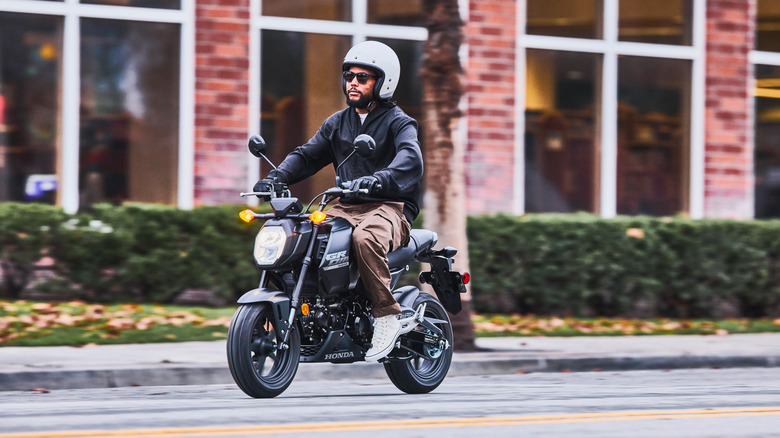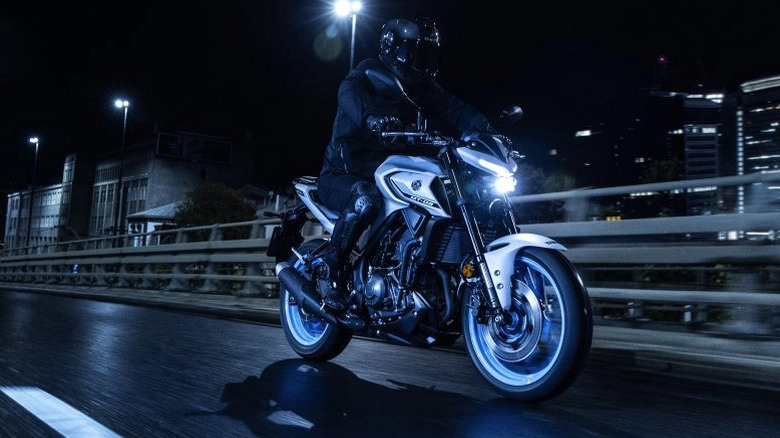How Many CCs Does A Motorcycle Need To Go On The Highway?
There's a pretty broad range of available two-wheeled machines these days. Tiny electric-powered scooters like the Honda Motocompacto are good at navigating small city streets, much like their human-powered bicycle brethren. Minimum speed laws designed to maintain the flow of traffic often restrict smaller motorcycles and mopeds, and in many states sub-50 cc mopeds aren't allowed on highways at all. Slightly larger internal combustion-powered machines like the Kawasaki Z125 Pro will get you to the shops much quicker, and with a potential top speed in the high 60-mph range, you might even be tempted to take mini bikes like the Z125 on the highway.
But with just 125 cc of engine displacement and only 7.1 horsepower, the Z125 just can't keep up with fast-moving freeway traffic. Even with that increase in displacement over mopeds, it still might be illegal to ride something that small on the highway in your state. California, for example, classifies anything under 150cc as a motor-driven cycle and restricts use to city streets. That's true for the popular Honda Grom as well, one of the Z125's chief rivals. For a motorcycle to spend any time on the highway, it should be at least 250ccs. That's where most manufacturers start their small sportbike lineups, and it's where some license requirements start as well. Bikes above 250 cc also tend to have enough power to keep up with the flow of traffic.
Some great small bikes that can do well on the freeway
The Suzuki GSX250R is a great bike for beginner riders looking for something approachable that's also powerful enough to go on the freeway when they're ready. The 248 cc parallel-twin engine has fuel economy estimates as high as 73.6 mpg, but it's powerful enough that it can take the bike up above 80 mph. That's plenty of speed to keep up with highway traffic, especially in most crowded cities. And the starting price of $5,749 (including $600 destination fee) is pretty appealing.
Honda and Yamaha both make 300 cc motorcycles that should have no trouble at freeway speeds. The Honda CBR300R, for example, uses a 286 cc single-cylinder engine that can get it up into the 80 mph range — enough for most highways in the United States. Meanwhile, Yamaha's R3 and MT-03 are both strong choices for low-CC beginner bikes that also have freeway capability. They use a 321 cc twin-cylinder engine, and on the R3, that means a top speed over 100 mph.
Bikes that sit just below the 250 cc mark like the Kawasaki KLX230 might seem tempting to take on the highway, and if traffic is heavy enough, you could probably keep up with the cars around you. But with a top speed that barely crests 70 mph, you certainly wouldn't want to spend any time in the fast lane. The larger and more powerful KLX 300SM is probably a better choice for riders who plan on taking the highway often.

